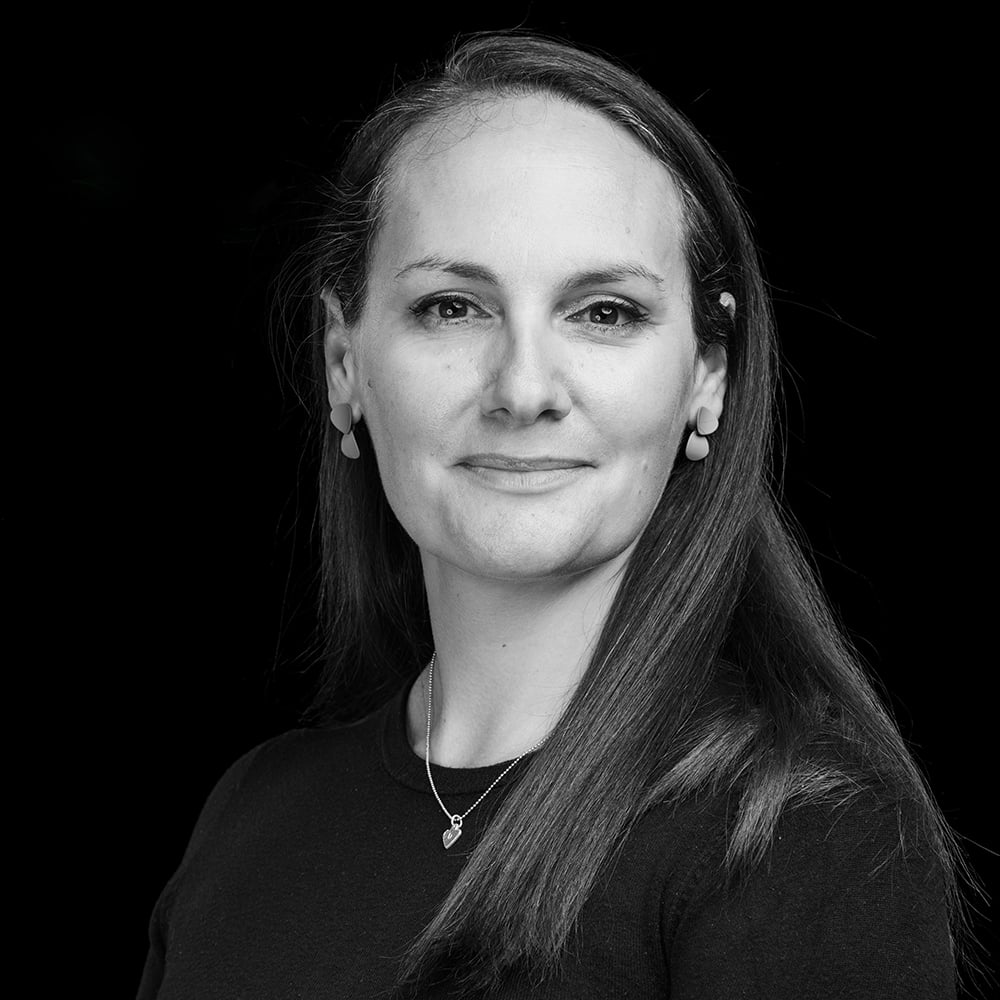Customer insights: why everything you know about your customers may be wrong
A tale of customer information vs customer insights in pharma
So you think you know your customers well?
I hear you! You’ve been in this game a long time… You’ve spent many years in customer-facing roles, you’ve attended conferences all around the globe, and you’ve read hundreds of market research results and social listening reports and you know the CRM system content inside out! But yet, I would still challenge how this helps you get to rich customer insights – where you understand and know your customer deeply.
At this stage you probably have a strong picture of facts and information about your customers, what information they are interested in, what channels they search content from, the people that influence them, the products they have purchased and how often, and maybe you have a strong system that has harmonised all this data and allows you to see everything in a report that makes sense.
But does your report and your customer information tell you: why does your customer use this channel over another? What drives them to be interested in certain topics? What deep belief impacts their decision making? How is their behaviour driven by their personal experiences?
Could there be more to customer insight than meets the eye (or the report)?
Let’s admit it, it is very easy to fall into the trap and mistake information and data for customer insights. As humans, once we have found what we are looking for, or once we have validated what we thought we knew, we might not go any further. But it is also human nature to remain curious and to keep asking questions, although there is evidence that after childhood we ask fewer and fewer questions, and therefore are at risk of being set in our own ways.
Once I was talking to a friend of mine who works in construction and he was telling me that they were building a bespoke house for someone suffering from Neuromuscular Disease (NMD). Since I’d worked in pharma long enough, he asked me what I knew about it, and to give him some pointers on whether the guy would need a lift or a stair lift, should the sinks be full height or lower and a long list of yes/no questions or ‘choose option a, b or c’.
My first reaction was that we were going about building this bespoke house the wrong way, but my second was that his approach looked very much like how we collect supposed ‘customer insights’ about our HCPs, patients, payers and other key stakeholders. We often ask them closed questions, or we phrase the questions with a view to validating what we think we know.
But you see, in our story we have someone in construction, trying to do what he knows (build a bespoke house and make the client happy), talking to someone with a progressive disease who doesn’t know what the future looks like or what options there might be for his bespoke house.
The danger in just asking questions is that you might feel you have a good picture of your customer, however superficial, but still miss what’s most important to them. And that is how easy it is to mistake data for customer insights. Having only information may actually lead you towards the wrong path, and suggest you develop programmes and campaigns that in fact may still not make the customer change their behaviour.
Having lots of facts about the customer does not make you customer-centric.
But what are we missing?
Genuine customer-centricity could be the missing link, being relentlessly curious about their behaviours and why they behave the way they do, and seeing them as a whole person, not just a customer of your brand in your therapy area. We need to understand what our people are doing and why. A customer insight can be defined as a deep truth about people which can be leveraged to drive behaviour change and growth.
Data alone is not an insight, it’s the thinking behind it that creates the insight.
Observations are important in creating insights, but it’s the why and the motivation behind it that is key; the outcome they are looking for. For example, we all know that patients can find sticking to a drug regimen a challenge, and end up having poor adherence to treatments. The data can certainly tell us what they do or don’t do, when it happens and how often, and superficial research might even inform us that they are too busy or they simply forgot. But deeper investigation discovers the insight: they are too busy because they need to make an injection right in the middle of their work shift and they cannot take the time off; or they forgot because they have other medication they need to take at different times and it has become all too confusing. And sometimes they will say that they forgot but in fact they have started taking their medication less often because they feel much better and they want to forget about their illness.
To uncover customer insights successfully, start with unbiased broad conversations about the person, find out what a typical day looks like, what drives them, worries them, what they like and dislike and then always ask why, why and why!
Back to our bespoke house… I suggested to my friend that, instead of having a long list of additional extras the customer could choose from, he should meet the customer for a coffee and have a conversation about what a typical day or week would look like from the minute he would wake up to when he would go to bed, finding out information that does not relate to preference of equipment but more understanding the need. His customer is an expert in how the disease impacts his daily life, and my friend is an expert in building bespoke houses. Listening intently, putting aside your assumptions, then asking why, will always get you to the truth about your customer, uncovering values and motivations.
Have we got a customer insight now?
It is important to note that deep customer insights will endure and continue to be relevant, even as circumstances change, unlike superficial comments or current hot topics. Building your solutions on deep customer insights will ensure long-lasting customer behaviour change and business relationship resilience.
Once you have reached strong customer insights, it’s always good practice to pressure test them.
- First, all the insights need to be written in an unbiased way and are written in the first person. You need to feel like you could hear the customer saying exactly this, in their voice – i.e. you caught them in conversation with someone else.
- Then, it needs to come from their heart, something that they might not often express out loud, it cannot be a superficial comment. Amongst the noise, what really matters here is to detect the real voice of the customer.
- Finally, it must represent a genuine need they have, using their own vocabulary, and include a ‘tension’ part which illustrates what might be getting in the way for them. It is always built on a strong reason why.
Customers are first and foremost people, and insights will undeniably evolve over time. As we uncover customer insights we might become so close to the topic that we are at risk of losing objectivity. Getting regular feedback from others will ensure the customer insights are free of biases, relevant and current.
Could Oxford support you in discovering and leveraging customer insights?
Customer insights and customer-centricity are key topics that keep coming back again and again. Pharma teams come to us with a great desire and need to improve in these areas. They often ask us for solutions to help them get to know their customers more deeply to ensure that what they have to offer, products or services, answers the customer’s biggest unmet needs. The solution we provide is often a mix of capabilities building and strategic live action work.
Customer insights can be harvested in every part of the strategic planning process, from the situation analysis to patient experience journey and customer engagement, and the good news is that we have a tried and tested ‘formula’ that will help you turn you customer information into strong actionable customer insights.
This is the construct to help you get to a customer insight: 
|
And here is an example: I am a 40-year-old woman, I am divorced with two children, I work at a call centre and I am a COPD sufferer I really enjoy my job and going out with friends and family, I want to be as active as I can and I don’t want COPD to hold me back |
|
|
My family relies on me to support them physically and financially, and I want to keep my independence. I know I am sick but I don’t want to miss any family event because of COPD and also I cannot afford not to work But I have multiple treatments to take for COPD and sometimes it gets a bit confusing, what to take when. At home it’s less of a problem, but at work the staff room is quite far away from my desk and upstairs, sometimes I run out of time during my breaks and I don’t go and get my meds, or I tell myself I’ll do it later. I come home and other things take priority such as looking after the kids, doing all the chores… and it’s only the next day I realised I’ve skipped the meds again |
|
Even with the magic formula, when it comes to customer insights, I always feel it is more an art than a science. First you’ll need a relentlessly curious mindset, but then it will take practice and discipline to get better at uncovering and crafting those customer insights.
The trick is to really dig deep enough and to be patient – it will take time to find the truth. If the insight is too shallow, it will be weak and generic, and not actionable. Not only must an insight be true, it must also be actionable, and the answer is almost always in the ‘but’ part of the insight – this is where the tension is. It will allow you to link the solution you have to offer to the deep needs of the customer.
Curiosity breeds curiosity, and once you get into this mindset, the questions will be flying in your head! When uncovering insights, I always wonder: will this be THE insight that unlocks the behaviour change, and gives us competitive advantage?
PS: But I hear you say, what about the guy with NMD? The house is still under construction and as the disease evolves so does the impact on his life and his ability. Part of the construction brief remained as-is, but it was imperative that there was headroom for scope changes. They are now considering AI technology to be fitted in parts of the house, to pre-empt potential future speech disabilities, something that is not on traditional construction schedule!
It is human nature to want to answer questions, and solve problems, but we need to move away from addressing immediate needs only and instead listen deeply to generate customer insights in order to co-create longer-term solutions.
About the author
Delphine has 20 years of experience in pharma with a specialism in successfully launching brands in vaccines and specialty care markets. With a growth-focused mindset she is focused on inspiring and leading both strategic and operational teams to get results.

Share this
You May Also Like
These Related Stories

Triple Lens Thinking in Category Growth Strategy

Customer Centricity: business strategy or philosophy?

.png?width=657&height=57&name=OXFORD%20LOGO%20(1).png)

No Comments Yet
Let us know what you think